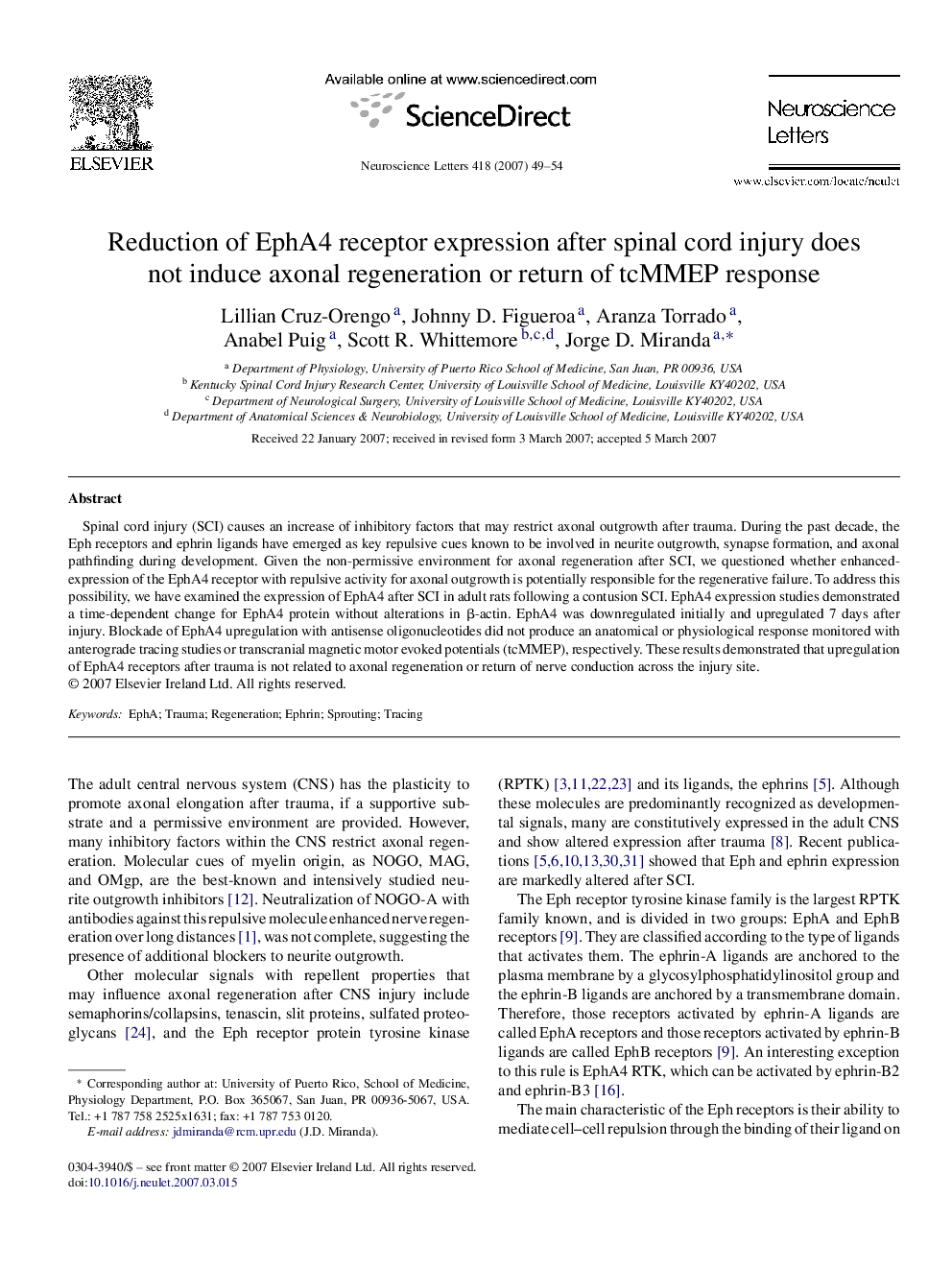| Article ID | Journal | Published Year | Pages | File Type |
|---|---|---|---|---|
| 4349752 | Neuroscience Letters | 2007 | 6 Pages |
Abstract
Spinal cord injury (SCI) causes an increase of inhibitory factors that may restrict axonal outgrowth after trauma. During the past decade, the Eph receptors and ephrin ligands have emerged as key repulsive cues known to be involved in neurite outgrowth, synapse formation, and axonal pathfinding during development. Given the non-permissive environment for axonal regeneration after SCI, we questioned whether enhanced-expression of the EphA4 receptor with repulsive activity for axonal outgrowth is potentially responsible for the regenerative failure. To address this possibility, we have examined the expression of EphA4 after SCI in adult rats following a contusion SCI. EphA4 expression studies demonstrated a time-dependent change for EphA4 protein without alterations in β-actin. EphA4 was downregulated initially and upregulated 7 days after injury. Blockade of EphA4 upregulation with antisense oligonucleotides did not produce an anatomical or physiological response monitored with anterograde tracing studies or transcranial magnetic motor evoked potentials (tcMMEP), respectively. These results demonstrated that upregulation of EphA4 receptors after trauma is not related to axonal regeneration or return of nerve conduction across the injury site.
Related Topics
Life Sciences
Neuroscience
Neuroscience (General)
Authors
Lillian Cruz-Orengo, Johnny D. Figueroa, Aranza Torrado, Anabel Puig, Scott R. Whittemore, Jorge D. Miranda,
